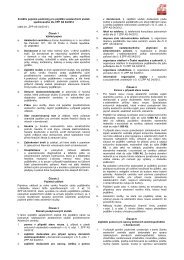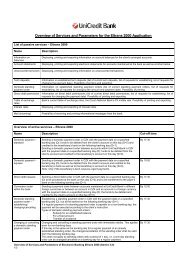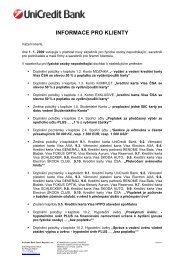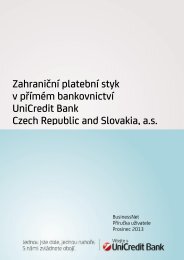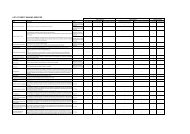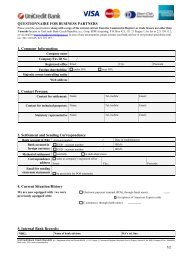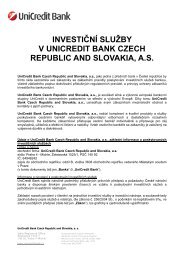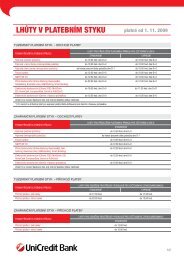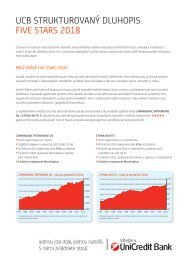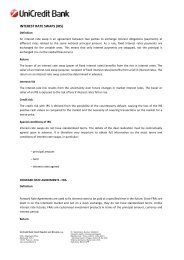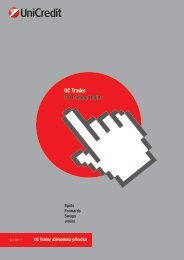Annual report 2004 (PDF, 4141 kB) - Unicredit Bank
Annual report 2004 (PDF, 4141 kB) - Unicredit Bank
Annual report 2004 (PDF, 4141 kB) - Unicredit Bank
You also want an ePaper? Increase the reach of your titles
YUMPU automatically turns print PDFs into web optimized ePapers that Google loves.
Exposure to credit risk is managed through regular analysis of the ability of borrowers<br />
and potential borrowers to meet interest and capital repayment obligations and by changing<br />
these lending limits where appropriate. Exposure to credit risk is also managed in part by<br />
obtaining collateral and corporate and personal guarantees.<br />
Derivatives<br />
The Group maintains strict control limits on net open derivative positions, i.e. the difference<br />
between purchase and sale contracts, by both amount and term. At any one time the amount<br />
subject to credit risk is limited to the current fair value of instruments that are favourable to<br />
the Group (i.e. assets), which in relation to derivatives is only a small fraction of the contract<br />
or notional values used to express the volume of instruments outstanding. This credit risk<br />
exposure is managed as part of the overall lending limits with customers, together with<br />
potential exposures from market movements. Collateral or other security is not usually<br />
obtained for credit risk exposures on these instruments.<br />
Credit related commitments<br />
The primary purpose of these instruments is to ensure that funds are available to a customer as<br />
required. Guarantees and standby letters of credit, which represent irrevocable assurances that<br />
the Group will make payments in the event that a customer cannot meet its obligations to third<br />
parties, carry the same credit risk as loans. Letters of credit, which are written undertakings<br />
by the Group on behalf of a customer authorising a third party to draw drafts on the Group up<br />
to a stipulated amount under specific terms and conditions, are collateralised by the<br />
underlying shipments of goods to which they relate and therefore carry less risk than direct<br />
borrowing.<br />
Commitments to extend credit represent unused portions of authorisations to extend credit<br />
in the form of loans, guarantees or letters of credit. With respect to credit risk<br />
on commitments to extend credit, the Group is potentially exposed to loss in an amount equal<br />
to the total unused commitments. However, the likely amount of loss, though not easy<br />
to quantify, is considerably less than the total unused commitments since most commitments<br />
to extend credit are contingent upon customers maintaining commitments. The risk is viewed<br />
as modest, since it results from the possibility of unused portions of loan authorisation being<br />
drawn by the customer and, secondly, from these drawings subsequently not being repaid<br />
as due. The Group monitors the term to maturity of credit commitments because longer-term<br />
commitments generally have a greater degree of credit risk than shorter-term commitments.<br />
The total outstanding contractual amount of commitments to extend credit does not<br />
necessarily represent future cash requirements, since many of these commitments will expire<br />
or terminate without being drawn.<br />
96




